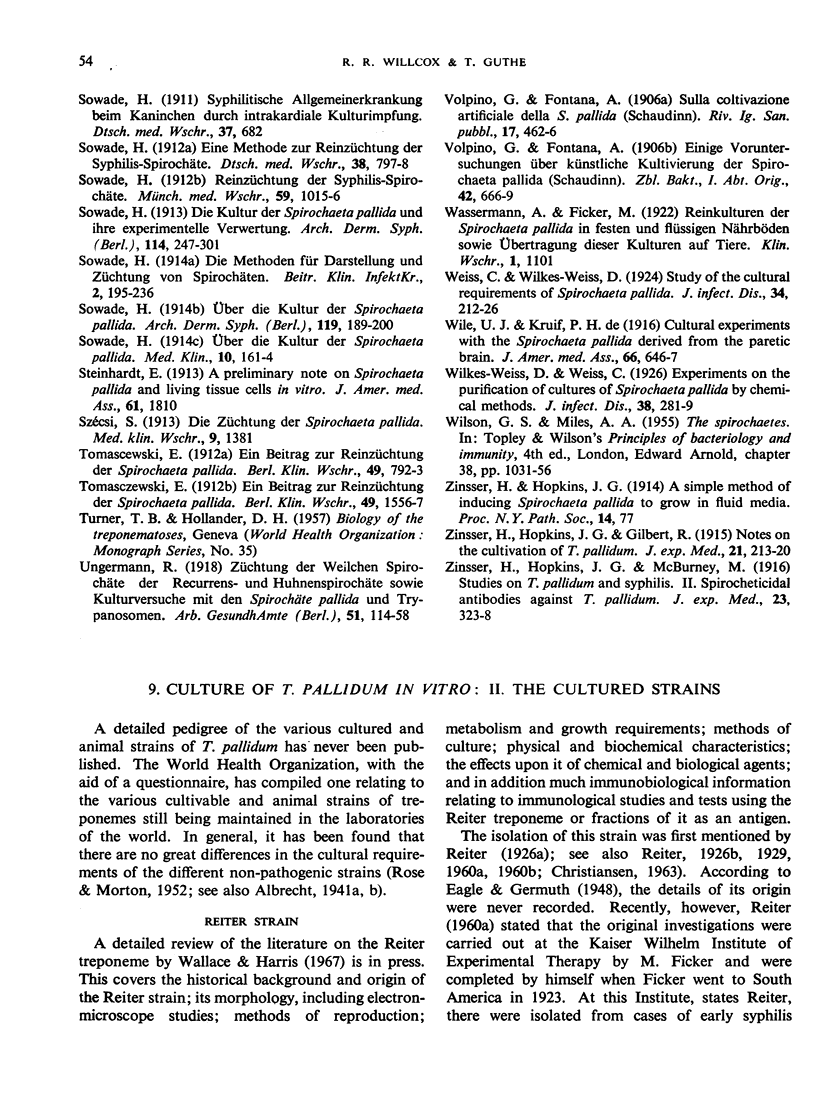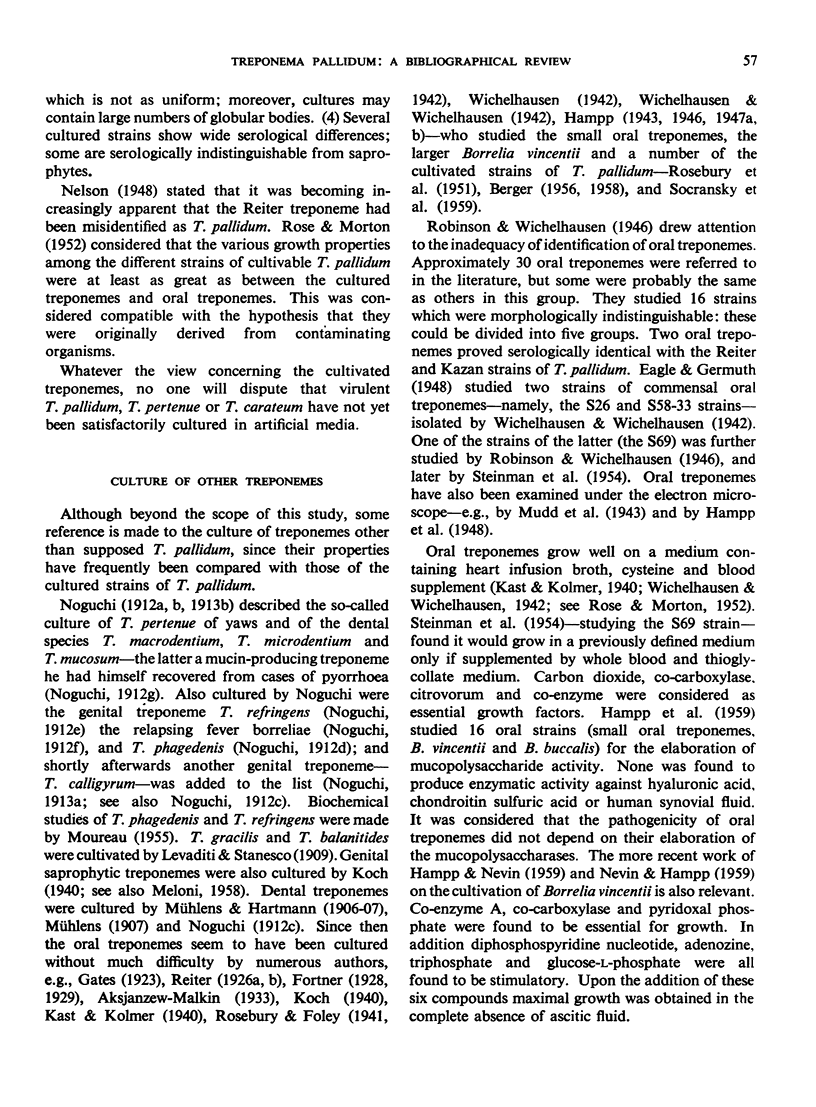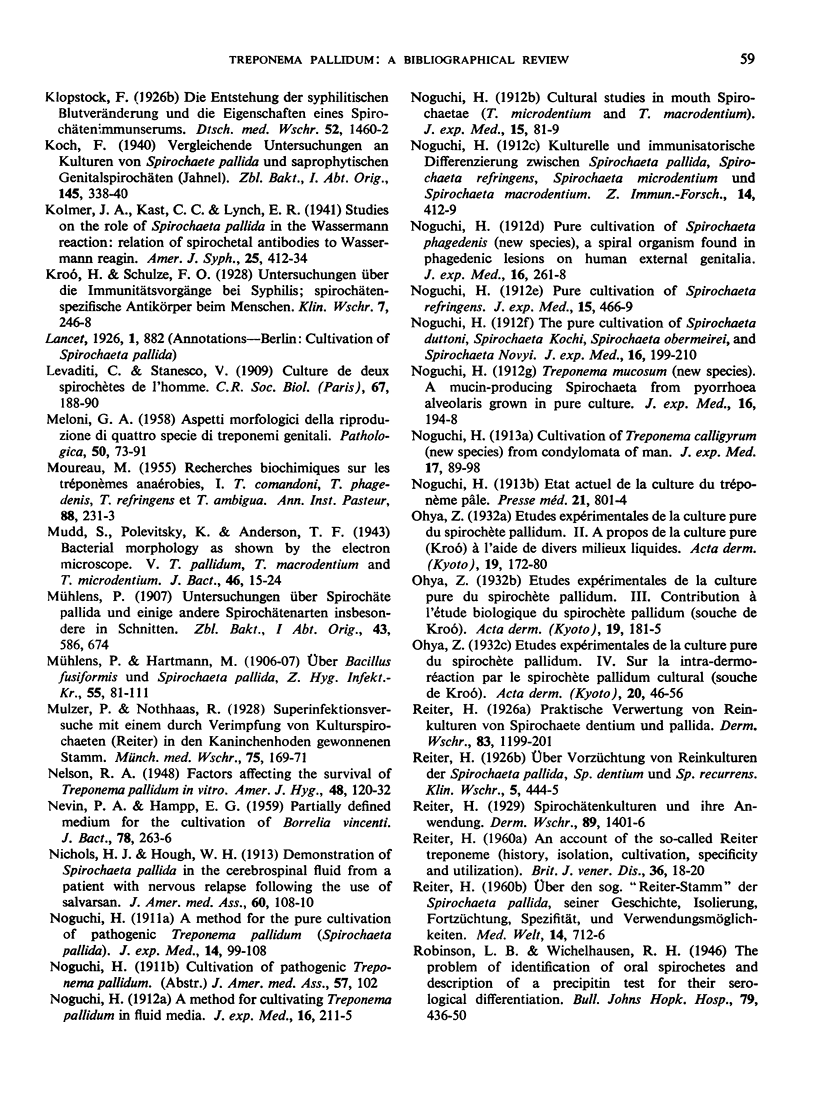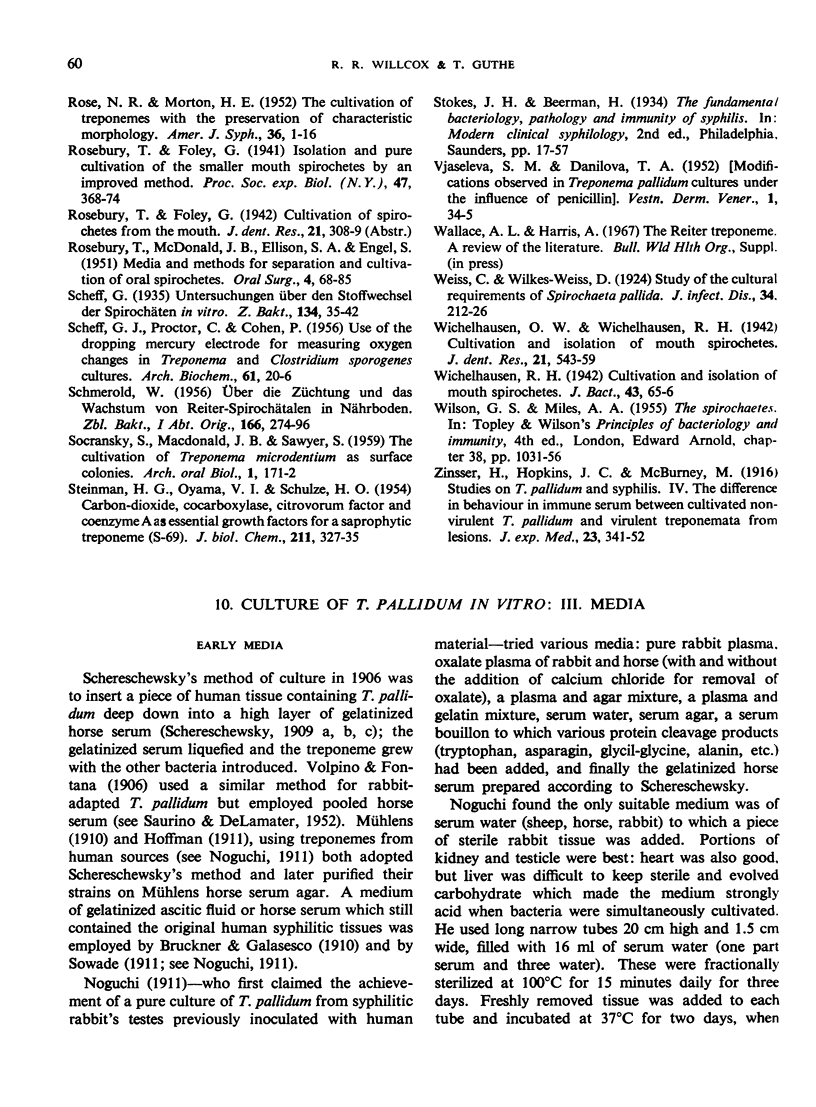Full text
PDF






Selected References
These references are in PubMed. This may not be the complete list of references from this article.
- BERGER U. Versuche zum Nachweis von Mucinase bei oralen Treponemen und Fusobakterien. Arch Hyg Bakteriol. 1958;142(3):194–197. [PubMed] [Google Scholar]
- BERGER U. Zur Züchtung der oralen Treponemen. Z Hyg Infektionskr. 1956;143(1):1–22. [PubMed] [Google Scholar]
- GELPERIN A. Morphology, cultural characteristics, and a method for mass cultivation by the Reiter spirochete. Am J Syph Gonorrhea Vener Dis. 1949 Mar;33(2):101–113. [PubMed] [Google Scholar]
- Gates F. L. THE CULTIVATION OF ANAEROBIC TREPONEMATA ON THE SURFACE OF BLOOD AGAR PLATES. J Exp Med. 1923 Feb 28;37(3):311–317. doi: 10.1084/jem.37.3.311. [DOI] [PMC free article] [PubMed] [Google Scholar]
- HAMPP E. G., MERGENHAGEN S. E., OMATA R. R. Studies on mucopolysaccharase activity of oral spirochetes. J Dent Res. 1959 Sep-Oct;38:979–982. doi: 10.1177/00220345590380052901. [DOI] [PubMed] [Google Scholar]
- HAMPP E. G., NEVIN T. A. Substitution of known compounds for ascitic fluid in the cultivation of Borrelia vincentii. J Bacteriol. 1959 Jun;77(6):800–803. doi: 10.1128/jb.77.6.800-803.1959. [DOI] [PMC free article] [PubMed] [Google Scholar]
- HARD S. Investigations into the possibility of cultivating virulent treponema pallidum in culture media containing phytogenic growth factors. Acta Derm Venereol. 1952;32(5):381–385. [PubMed] [Google Scholar]
- Hampp E. G., Scott D. B., Wyckoff R. W. Morphologic Characteristics of Certain Cultured Strains of Oral Spirochetes and Treponema pallidum as Revealed by the Electron Microscope. J Bacteriol. 1948 Dec;56(6):755–769. doi: 10.1128/jb.56.6.755-769.1948. [DOI] [PMC free article] [PubMed] [Google Scholar]
- MELONI G. A. Aspetti morfologici della riproduzione di quattro specie di treponemi genitali. Pathologica. 1958 Mar-Apr;50(763-764):73–91. [PubMed] [Google Scholar]
- MOUREAU M. Recherches biochimiques sur les tréponèmes anaérobies. I. T. comandoni, T. phagedenis, T. refringens et T. ambigua. Ann Inst Pasteur (Paris) 1955 Feb;88(2):231–233. [PubMed] [Google Scholar]
- Mudd S., Polevitzky K., Anderson T. F. Bacterial Morphology as shown by the Electron Microscope: V. Treponema pallidum, T. macrodentium and T. microdentium. J Bacteriol. 1943 Jul;46(1):15–24. doi: 10.1128/jb.46.1.15-24.1943. [DOI] [PMC free article] [PubMed] [Google Scholar]
- NEVIN T. A., HAMPP E. G. Partially defined medium for the cultivation of Borrelia vincentil. J Bacteriol. 1959 Aug;78:263–266. doi: 10.1128/jb.78.2.263-266.1959. [DOI] [PMC free article] [PubMed] [Google Scholar]
- Noguchi H. A METHOD FOR CULTIVATING TREPONEMA PALLIDUM IN FLUID MEDIA. J Exp Med. 1912 Aug 1;16(2):211–215. doi: 10.1084/jem.16.2.211. [DOI] [PMC free article] [PubMed] [Google Scholar]
- Noguchi H. CULTIVATION OF TREPONEMA CALLIGYRUM (NEW SPECIES) FROM CONDYLOMATA OF MAN. J Exp Med. 1913 Jan 1;17(1):89–98. doi: 10.1084/jem.17.1.89. [DOI] [PMC free article] [PubMed] [Google Scholar]
- Noguchi H. METHOD FOR THE PURE CULTIVATION OF PATHOGENIC TREPONEMA PALLIDUM (SPIROCHAETA PALLIDA). J Exp Med. 1911 Aug 1;14(2):99–108. doi: 10.1084/jem.14.2.99. [DOI] [PMC free article] [PubMed] [Google Scholar]
- REITER H. An account of the so-called Reiter treponeme (history, isolation, cultivation, specificity, and utilization). Br J Vener Dis. 1960 Mar;36:18–20. doi: 10.1136/sti.36.1.18. [DOI] [PMC free article] [PubMed] [Google Scholar]
- ROSEBURY T., MACDONALD J. B., ELLISON S. A., ENGEL S. G. Media and methods for separation and cultivation of oral spirochetes. Oral Surg Oral Med Oral Pathol. 1951 Jan;4(1):68–85. doi: 10.1016/0030-4220(51)90525-7. [DOI] [PubMed] [Google Scholar]
- ROSE N. R., MORTON H. E. The cultivation of treponemes with the preservation of characteristic morphology. Am J Syph Gonorrhea Vener Dis. 1952 Jan;36(1):1–16. [PubMed] [Google Scholar]
- SCHMEROLD W. Uber die Züchtung und das Wachstum von Reiter-Spirochaetalen in Nährböden. Zentralbl Bakteriol Orig. 1956 Jul;166(3-4):274–296. [PubMed] [Google Scholar]
- SOCRANSKY S., MACDONALD J. B., SAWYER S. The cultivation of Treponema microdentium as surface colonies. Arch Oral Biol. 1959 Oct;1:171–172. doi: 10.1016/0003-9969(59)90009-3. [DOI] [PubMed] [Google Scholar]
- STEINMAN H. G., OYAMA V. I., SCHULZE H. O. Carbon dioxide, cocarboxylase, citrovorum factor, and coenzyme A as essential growth factors for a saprophytic treponeme (S-69). J Biol Chem. 1954 Nov;211(1):327–335. [PubMed] [Google Scholar]
- Zinsser H., Hopkins J. G., McBurney M. STUDIES ON TREPONEMA PALLIDUM AND SYPHILIS : IV. THE DIFFERENCE IN BEHAVIOR IN IMMUNE SERUM BETWEEN CULTIVATED NON-VIRULENT TREPONEMA PALLIDUM AND VIRULENT TREPONEMATA FROM LESIONS. J Exp Med. 1916 Mar 1;23(3):341–352. doi: 10.1084/jem.23.3.341. [DOI] [PMC free article] [PubMed] [Google Scholar]


